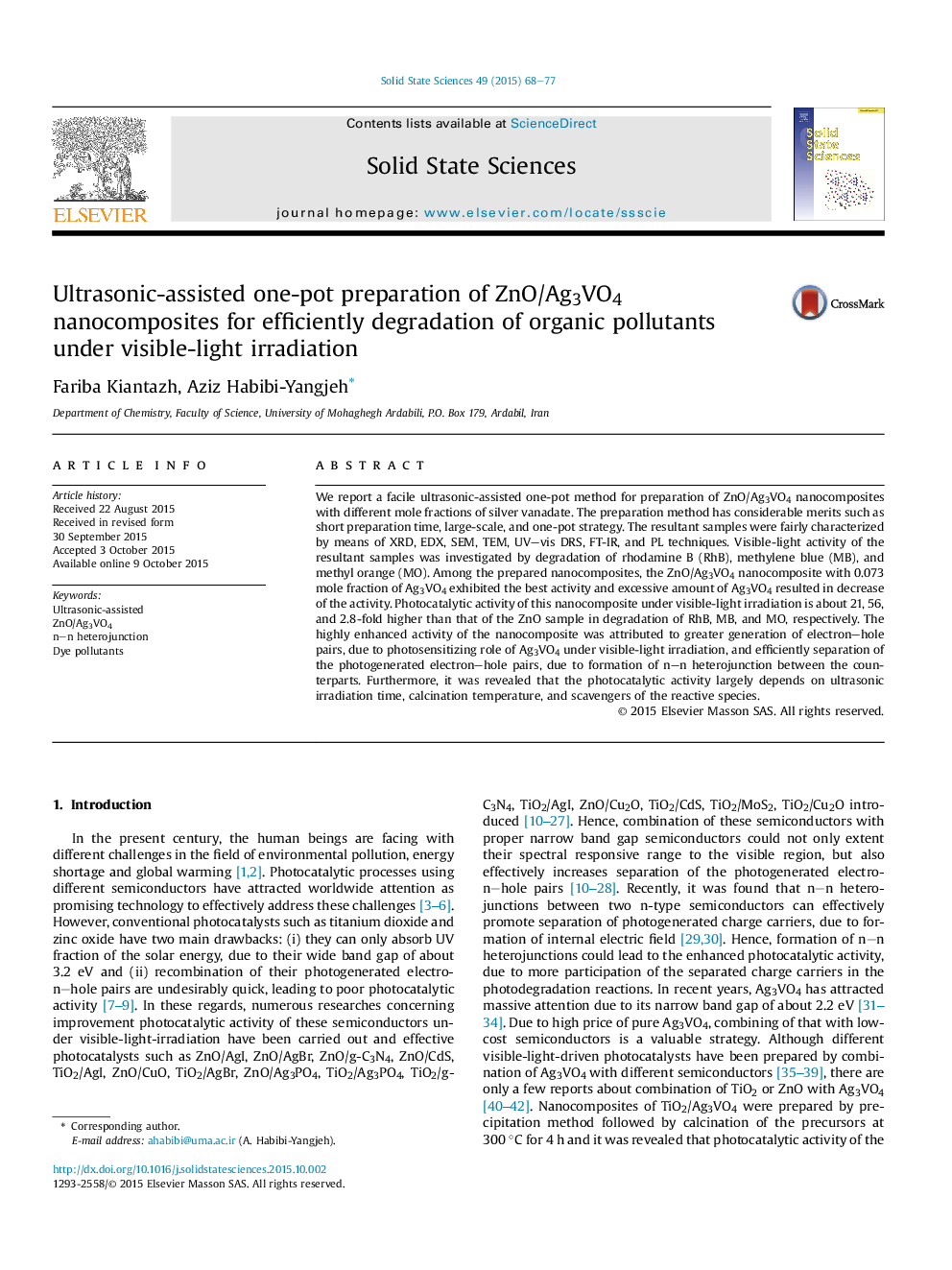| Article ID | Journal | Published Year | Pages | File Type |
|---|---|---|---|---|
| 1504180 | Solid State Sciences | 2015 | 10 Pages |
•Ultrasonic assisted method was applied for preparation of ZnO/Ag3VO4 nanocomposites.•The nanocomposites have excellent visible-light-driven photocatalytic activity.•The nanocomposite with 0.073 mole fraction of Ag3VO4 exhibited the best activity.•Activity of the nanocomposite is about 9.7-fold higher than ZnO in degradation of RhB.
We report a facile ultrasonic-assisted one-pot method for preparation of ZnO/Ag3VO4 nanocomposites with different mole fractions of silver vanadate. The preparation method has considerable merits such as short preparation time, large-scale, and one-pot strategy. The resultant samples were fairly characterized by means of XRD, EDX, SEM, TEM, UV–vis DRS, FT-IR, and PL techniques. Visible-light activity of the resultant samples was investigated by degradation of rhodamine B (RhB), methylene blue (MB), and methyl orange (MO). Among the prepared nanocomposites, the ZnO/Ag3VO4 nanocomposite with 0.073 mole fraction of Ag3VO4 exhibited the best activity and excessive amount of Ag3VO4 resulted in decrease of the activity. Photocatalytic activity of this nanocomposite under visible-light irradiation is about 21, 56, and 2.8-fold higher than that of the ZnO sample in degradation of RhB, MB, and MO, respectively. The highly enhanced activity of the nanocomposite was attributed to greater generation of electron–hole pairs, due to photosensitizing role of Ag3VO4 under visible-light irradiation, and efficiently separation of the photogenerated electron–hole pairs, due to formation of n–n heterojunction between the counterparts. Furthermore, it was revealed that the photocatalytic activity largely depends on ultrasonic irradiation time, calcination temperature, and scavengers of the reactive species.
Graphical abstractFigure optionsDownload full-size imageDownload as PowerPoint slide
